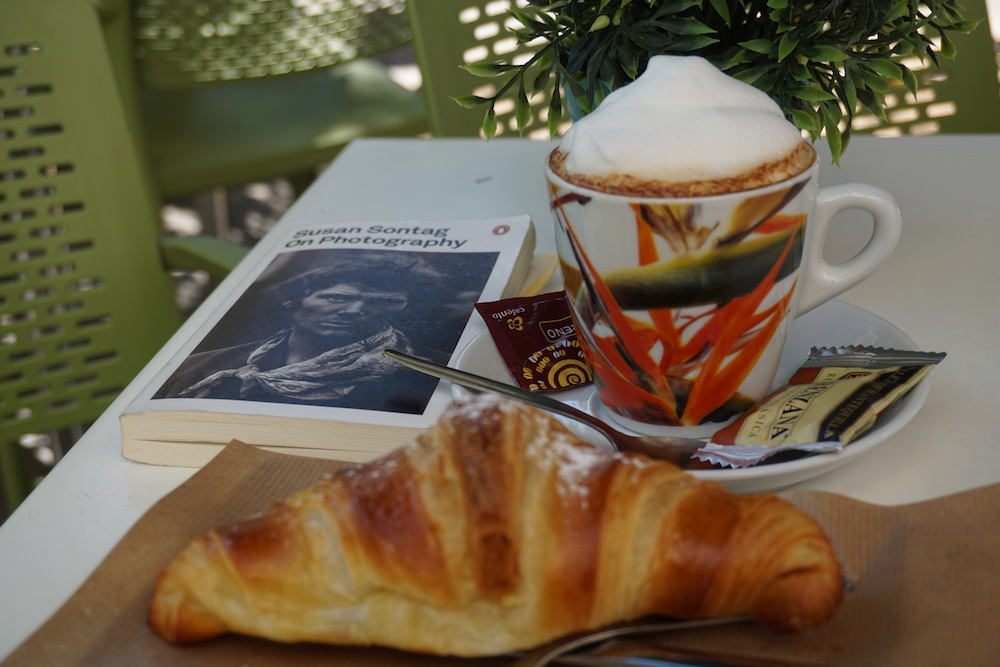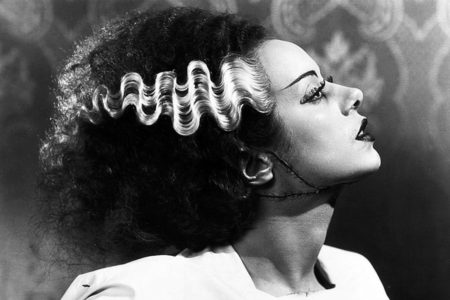No Filter Book Club: On Photography by Susan Sontag

Last month I bought a camera. A Sony Alpha 6000, actually, because it’s compact and good and in my price range.
I bought a camera because I want to take good photos along with the articles I write. I plan to travel around pursuing interesting stories about nightlife and club culture and take snaps of my subjects while I do it. So right now I’m obsessed with how to take a good photo.
Before I bought my camera I had a low opinion on photography and by that I mean the act of photographing rather than the result. I felt that the act of taking a photograph removes you from an experience and that getting everyone at a birthday dinner to stop eating, look up and smile into a camera is joyless. Also joyless: watching concerts through the lens of an iPhone, posing in front of a monument, taking photos of views.
Since I got my Sony Alpha I’ve drafted in some of my nice pals to teach me everything they know about photography. Laurence taught me about shutter speed, aperture and ISO. Liz spent an entire afternoon posing for me while I clumsily adjusted my settings and Emma let me look over her shoulder as she snapped the neon lights of Hasenheide fair. And somewhere amongst these excursions something clicked. It’s kind of like solving a little puzzle, getting a good snap, and a little bit of serotonin seemed to puff out my ears every time I got one.
Last year, before I cared about photography, I bought Susan Sontag’s book of essays On Photography. The book was published in 1977 which means it’s purely about pre-digital, pre-iPhone photography which makes everything slightly ominous. Sontag writes about the act and art of photography in philosophical terms and I agree with a lot of the issues she voices as problematic, which somehow makes me feel less guilty about doing it. Here are some of those issues – I underlined them for your perusal, dear reader:
Death
“To look at an old photograph of oneself, of anyone one has known … is to feel … how much younger I (she, he) was then.” (Melancholy Objects.)
“One’s reaction to the photographs Roman Vishniac look in 1938 of daily life in the ghettos of Poland is overwhelmingly affected by how soon all these people were to perish.” (Melancholy Objects.)
“A society which makes it normative to aspire never to experience privation, failure, misery, pain, dread, disease, and in which death itself is regarded not as natural and inevitable but as a cruel, unmerited disaster, creates a tremendous curiosity about these events – a curiosity that is partly satisfied through picture-taking. The feeling of being exempt from calamity stimulates interest in looking at painful pictures, and looking at them suggests and strengthens the feeling that one is exempt.” (The Image-World).
“Photographing is essentially an act of non-intervention. Part of the horror of such memorable coups of contemporary photojournalism as the pictures of a Vietnamese bonzo reaching for the gasoline can, or a Bengali guerrilla in the act of bayoneting a trussed-up collaborator, comes from the awareness of how plausible it has become, in situations where the photographer has the choice between a photograph and a life, to choose the photograph.” (In Plato’s Cave).
Vanity
“Many people are anxious when they’re about to be photographed: not because they fear […] being violated but because they fear the camera’s disapproval. People want the idealised image: a photograph of themselves looking their best. They feel rebuked when the camera doesn’t return an image of themselves as more attractive than they really are.” (The Heroism of Vision).
Objectification
“Whatever the moral claims made on behalf of photography, its main effect is to convert the world into a department store or museum-without-walls in which every object is depreciated into an article of consumption, promoted into an item of aesthetic appreciation. […] Bringing the exotic near, rendering the familiar and homely exotic, photographs make the entire world available as an object of appraisal.” (The Heroism of Vision).
Aggression
“The attraction to view the photographer as ideal observer … is that it implicitly denies that pitcture-taking is in any way an aggressive act. That it can be so described makes most professionals extremely defensive.” (Photographing Evangels).
“Very few have talked honestly about the exploitative aspect of the photographer’s activities. Usually photographers feel obliged to protest photography’s innocence, claiming that the predatory attitude is incompatible with a good picture.” (Photographing Evangels).
Photography as art
“For about a century the defence of photography was identical with the struggle to establish it as a fine art. Against the charge that photography was a soulless, mechanical copying of reality, photographers asserted that it was a vanguard revolt against ordinary standards of seeing, no less worthy an art than painting.” (Photographing Evangels).
“Photography, though not an art form in itself, has the peculiar capacity to turn all its subjects into works of art.” (Photographing Evangels).
Subjectivity
“To prefer one photograph to another seldom means only that the photograph is judged to be superior formally; it almost always means – as in more casual kinds of looking – that the viewer prefers that kind of mood, or respects that intention, or is intrigued by (or feels nostalgic about) that subject.” (Photographing Evangels).
Sentimentalism
“Few people in this society think of the photograph as a material part of themselves. But some trace of the magic remains: for example, in our reluctance to tear up or throw away the photograph of a loved one, especially of someone dead or far away. To do so is a ruthless gesture of rejection.” (The Image-World).
Consumption
“The possession of a camera can inspire something akin to lust. And like all credible forms of lust, it cannot be satisfied: first, because the possibilities of photography are infinite, and, second, because the project is finally self-devouring. […] We consume images at an ever faster rate and images consume reality.” (The Image-World).


